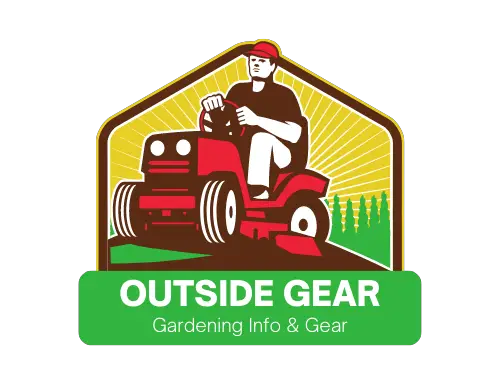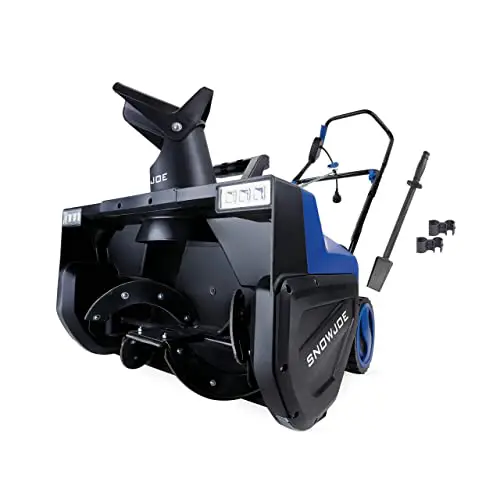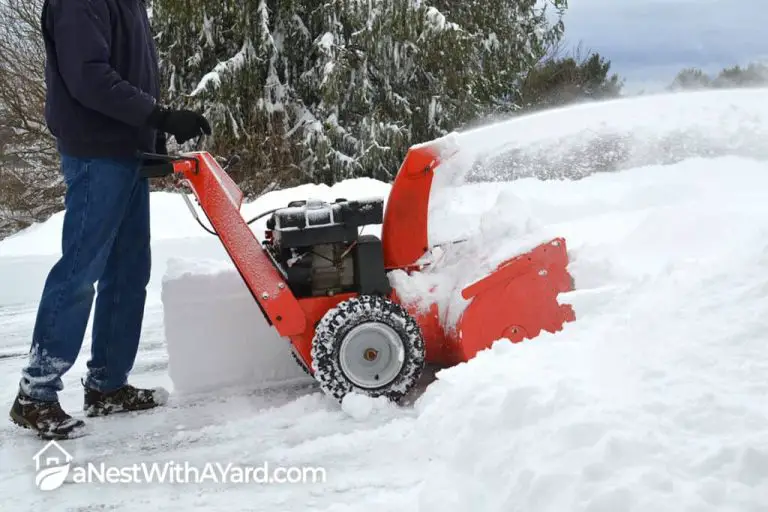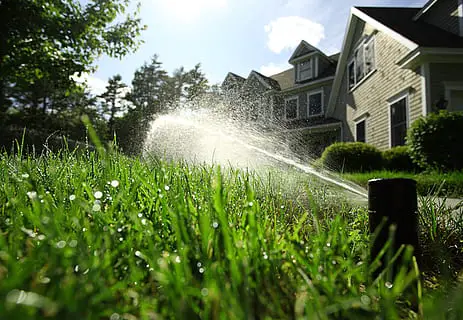A snow blower is a machine that uses an engine and a rotating auger to clear snow, while a plow is a blade-like attachment that is mounted on a vehicle to push snow aside. Snow blowers are more versatile and can be used for various snow removal tasks, while plows are primarily designed for clearing large areas, such as parking lots or roads.
Both devices have their advantages and disadvantages, and the choice between them depends on factors like the size and type of the area to be cleared, the amount of snow to be removed, and personal preferences. Additionally, availability, cost, and ease of use are also important considerations when deciding between a snow blower and a plow.
Ultimately, the decision should be based on individual needs and the specific requirements of the snow removal job at hand.
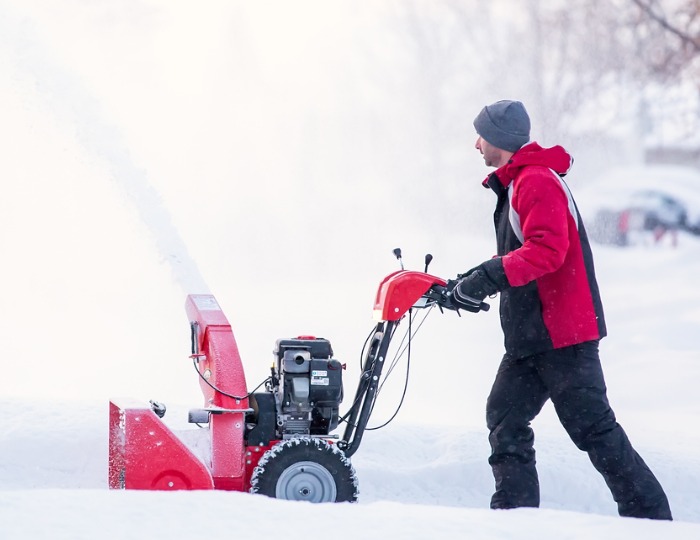
Credit: www.youraspire.com
Understanding The Differences Between Snow Blowers And Plows
Snow blower vs plow: uncovering the key distinctions – a comprehensive comparison
When it comes to tackling a snowy driveway or clearing the streets after a heavy snowfall, two popular options come to mind: snow blowers and plows. Both of these tools are designed to make your life easier during the winter months, but they have their own unique capabilities and limitations.
Understanding the differences between snow blowers and plows will help you make an informed decision on which one is best suited for your snow-clearing needs. Let’s dive in and discover the key distinctions!
Snow Blowers: A Handy Tool For Residential Use
Snow blowers, also known as snow throwers, are commonly used by homeowners to clear snow from their driveways and sidewalks. Here are the key points to know about snow blowers:
- Snow blowers are typically smaller and more compact compared to plows, making them ideal for residential use.
- They come in two main types: Single-stage and two-stage. Single-stage models are lighter and easier to maneuver, while two-stage models offer more power and can handle larger amounts of snow.
- Snow blowers use an auger to scoop up the snow and throw it out through a chute, allowing you to control the direction of the snow discharge.
- They are versatile and can handle various types of snow, including wet and heavy snow.
- Snow blowers are electric or gas-powered, providing you with options based on your preferences and accessibility to power sources.
Plows: The Heavy-Duty Solution For Large Areas
Plows, on the other hand, are heavy-duty tools commonly used by commercial snow removal services or municipalities to clear large areas such as roads, parking lots, and highways. Here are the key distinctions of plows:
- Plows are significantly larger and more powerful than snow blowers, allowing them to clear large amounts of snow in less time.
- They are typically attached to trucks or heavy machinery, such as tractors or loaders, to provide the necessary power and mobility.
- Plows use a large, angled blade to push the snow to the side as the vehicle moves forward, creating a cleared path.
- They are best suited for open areas with ample space for maneuvering, as their size and weight can be a challenge in tighter spaces.
- Plows are efficient for clearing large volumes of snow quickly, making them a preferred choice for professional snow removal services.
When deciding between a snow blower and a plow, consider the scope of your snow-clearing needs. If you have a smaller residential area to clear, a snow blower offers convenience and versatility. However, for larger areas or heavy-duty snow removal, a plow is the most efficient tool.
Whether you opt for a snow blower or a plow, both can help you conquer the winter snow and ensure safe passage. Stay tuned for our upcoming articles as we delve deeper into each tool’s advantages and considerations.
How Snow Blowers Work And Their Advantages
Snow blowers and plows are both effective tools for clearing snow, but they work in different ways and offer distinct advantages. In this blog post, we will focus on snow blowers and delve into how they work and the benefits they provide for snow removal.
Understanding the functionality and advantages of snow blowers can help you make an informed decision when it comes to choosing the right tool for clearing snow. So, let’s dive in and explore the world of snow blowers!
Types Of Snow Blowers And Their Functionality
Snow blowers come in various types, each designed to handle different amounts of snow and cater to specific terrains. Here are some common types of snow blowers:
- Single-stage snow blowers: These compact and lightweight snow blowers are ideal for clearing light to moderate snowfall of up to 8 inches. They use a single auger to scoop up the snow and throw it out through a chute.
- Two-stage snow blowers: These heavy-duty machines can tackle larger snowfalls, typically ranging from 8 to 12 inches or more. Two-stage snow blowers employ an auger to gather the snow and a separate fan-like impeller to expel it, providing enhanced throwing distance and efficiency.
- Three-stage snow blowers: The most powerful among snow blowers, three-stage models excel at dealing with heavy and wet snow. They feature an additional accelerator that breaks up chunks of snow and ice before passing it to the impeller, resulting in optimum snow clearing performance.
Power Source Options For Snow Blowers
When it comes to powering snow blowers, several options are available, each with its own advantages:
- Gas-powered snow blowers: These models offer superior mobility and are perfect for larger properties or areas without easy access to electrical outlets. Gas-powered snow blowers provide robust performance, making light work of even the heaviest snowfalls.
- Electric-powered snow blowers: Smaller properties or areas with limited storage space can benefit from the compact size and ease of use offered by electric-powered snow blowers. They are typically lighter and quieter than gas-powered alternatives, making them more suitable for residential use.
- Battery-powered snow blowers: This increasingly popular option offers the convenience of cordless operation without sacrificing performance. Battery-powered snow blowers are environmentally friendly, emit no harmful fumes, and are generally quieter than gas-powered models.
Benefits Of Using Snow Blowers For Snow Removal
The advantages of using snow blowers for snow removal go beyond their specific functionalities and power sources. Here are some key benefits:
- Time-saving efficiency: Snow blowers are designed to swiftly and efficiently clear snow, reducing the time and effort required for manual snow shoveling or pushing snow with a plow. They can cover larger areas in a shorter period, ensuring minimal disruption to your daily routine.
- Reduced physical strain: By eliminating the need for heavy lifting and repetitive shoveling, snow blowers can help prevent injuries and strain on your back, shoulders, and muscles. This is especially advantageous for individuals with physical limitations or health concerns.
- Versatility in diverse conditions: Snow blowers can handle various snow conditions, from light powder to heavy, wet snow. Adjustable settings and features allow you to adapt to different terrains, making them versatile tools for snow removal in different regions and climates.
- Cleaner snow removal: Snow blowers effectively gather and throw snow away, reducing the need to relocate piles of snow or risk obstructing pathways and driveways. This ensures a cleaner snow removal process, enhancing safety and accessibility for both vehicles and pedestrians.
With an understanding of the types of snow blowers, their functionality, power source options, and the benefits they provide, you can make an informed choice when deciding which snow removal tool is right for you. Whether you’re dealing with a light dusting or battling heavy snowfall, a snow blower can be an invaluable ally in keeping your property clear and safe.
So, why not embrace the efficiency and convenience of a snow blower and make your winter snow clearing tasks a breeze?
Common Features And Considerations For Snow Blowers
Snow blowers and snow plows are both essential tools for clearing snow during the winter, but what sets them apart? In this blog post, we will delve into the key features and considerations for snow blowers. Whether you’re a homeowner or a professional snow removal service, understanding these factors can help you make an informed decision about which option is best for your needs.
Key Features To Look For In A Snow Blower
When shopping for a snow blower, here are some essential features to keep in mind:
- Clearing width: This refers to the width of the snow blower’s path and determines how much snow it can clear in a single pass.
- Engine power: A powerful engine ensures that the snow blower can handle heavy snowfall and difficult terrain.
- Drive system: Look for a snow blower with a reliable drive system, such as self-propelled or track drive, to ease maneuverability.
- Clearing depth: The clearing depth indicates the maximum amount of snow a blower can handle, so consider your average snowfall and choose accordingly.
- Chute controls: Opt for a snow blower with adjustable chute controls, allowing you to direct the snow where you want it to go.
Factors To Consider When Choosing A Snow Blower
Here are some important factors to consider when selecting a snow blower:
- Snowfall amount: Consider the average snowfall in your area. If you frequently encounter heavy snow, opt for a snow blower with a higher clearing capacity and more powerful engine.
- Terrain: Assess the terrain you will be clearing. If you have a flat, even surface, a single-stage snow blower might suffice. However, for rough or uneven terrain, a two-stage or three-stage snow blower is a better choice.
- Storage space: Snow blowers come in various sizes, so it’s important to consider the available storage space. Measure the dimensions of your storage area to ensure the snow blower will fit comfortably.
Pros And Cons Of Using A Snow Blower
While snow blowers offer many advantages, it’s important to consider the pros and cons before making a purchase decision:
- Pros:
- Efficient and time-saving, allowing you to clear snow quickly and easily.
- Versatile for various snow conditions, with adjustable settings.
- Can handle larger snowfall amounts and deeper snow.
- Suitable for residential or commercial use.
- Cons:
- Initial investment may be higher than a snow plow.
- Requires regular maintenance, such as oil changes and spark plug replacement.
- Limited to clearing snow from smaller areas.
Snow blowers offer a range of features and considerations that should be taken into account. By assessing the key features, considering important factors, and weighing the pros and cons, you can make an informed decision about which snow blower is right for you.
Stay tuned for our next blog post, where we will explore the differences between snow blowers and snow plows in greater detail.
Understanding Plows And Their Benefits
With winter fast approaching, it’s important to have a clear understanding of the different methods available for snow removal. One common debate is between snow blowers and plows – both effective tools for clearing snow, but with distinct differences in functionality and benefits.
In this section, we’ll focus on plows and delve into the types of plows available and their functionality, the advantages of using plows for snow removal, and when plows are more suitable than snow blowers.
Types Of Plows And Their Functionality
- Straight blade plows: These plows feature a simple, straight design and are ideal for pushing snow in a single direction. They are versatile and well-suited for residential use.
- V-plows: V-shaped plows are designed with the ability to angle the blades to push snow to the sides, making them highly efficient for wider areas. They are commonly used for commercial purposes and can handle heavy snowfalls with ease.
- Winged plows: Winged plows, also known as expandable plows, have adjustable wings that can extend or retract to increase the width of the plow. This allows for greater snow clearing capacity and makes them an excellent choice for larger areas or parking lots.
Advantages Of Using Plows For Snow Removal
- Efficiency: Plows are generally faster than snow blowers, as they can clear larger areas in less time. This is especially beneficial for commercial properties that require quick and efficient snow removal.
- Versatility: Plows can be used on various surfaces, including asphalt, concrete, gravel, and even grass. They are designed to adapt to different conditions, making them suitable for a wide range of applications.
- Lower maintenance: Snow blowers often require regular maintenance, such as fueling, oil changes, and belt replacements. On the other hand, plows have fewer moving parts and generally require less maintenance, resulting in lower operating costs.
When Plows Are More Suitable Than Snow Blowers
- Large snow accumulation: Plows are particularly effective when dealing with heavy snowfall or when there is a significant accumulation of snow. Their ability to quickly push large amounts of snow out of the way makes them a preferred choice in such situations.
- Wide areas: If you have a large area to clear, such as a parking lot or long driveway, plows are more efficient due to their wider coverage. They can easily tackle wider spaces, reducing the amount of time and effort required for snow removal.
Plows offer several advantages over snow blowers, including efficiency, versatility, and lower maintenance requirements. They are particularly well-suited for dealing with heavy snow accumulations and wider areas. Whether you opt for a straight blade, v-plow, or winged plow, rest assured that utilizing a plow will make your snow removal tasks much more manageable.
Important Considerations When Using Plows
When it comes to removing snow, using a plow can be an efficient and effective option. However, it’s important to consider several factors before opting for a plow. Let’s dive into the key factors to keep in mind when choosing a plow and explore some common challenges and limitations you may encounter.
Key Factors To Consider When Choosing A Plow
When selecting a plow for snow removal, there are a few important factors to consider:
- Size and type: Plows come in various sizes and types, so it’s crucial to choose one that is suitable for the area you need to clear. Consider the size of your property and the amount of snowfall you typically experience.
- Vehicle compatibility: Ensure that the plow you choose is compatible with your vehicle. Different plows are designed for specific types of vehicles, so be sure to check the specifications and requirements before making a decision.
- Adjustability: Look for a plow that offers adjustable features, such as blade height and angle. This allows you to adapt to different snow conditions and ensure effective snow removal.
- Durability: Snow removal can be a challenging task, so opt for a plow that is built to withstand harsh conditions. Look for sturdy materials and reliable construction that can endure heavy use over time.
Common Challenges And Limitations When Plowing Snow
Plowing snow using a plow, though effective, does come with its fair share of challenges and limitations. Here are a few to keep in mind:
- Obstacles: Plowing can be difficult when faced with obstacles such as curbs, parked cars, or uneven terrain. These obstacles may require additional effort or alternative snow removal methods.
- Limited reach: Plows have a limited reach, especially in tight or narrow spaces. If you have areas with limited access, such as narrow driveways or paths, a plow may not be the most efficient option.
- Piling and displacement: Plowing snow can result in piles or mounds of snow along the edges of the cleared areas. This can be problematic if you have limited space or if the piled snow obstructs visibility.
Pros And Cons Of Using A Plow
Using a plow for snow removal has its pros and cons. Here are a few to consider:
- Pros:
- Quick and efficient for large areas.
- Suitable for heavy and deep snow.
- Can be controlled from within the vehicle, providing convenience and comfort.
- Cons:
- May not be suitable for tight spaces or areas with obstacles.
- Can result in displaced snow piles.
- Requires a compatible vehicle and additional equipment.
Considering these key factors and being aware of the challenges and limitations can help you make an informed decision on whether a plow is the right choice for your snow removal needs. Remember to match the plow’s specifications to your property size, consider the vehicle compatibility, and evaluate the adjustability and durability features before making your final selection.
Determining The Right Snow Removal Method For Your Needs
Are you tired of shoveling snow by hand every winter? You’re not alone. When it comes to snow removal, many homeowners and property owners face the dilemma of deciding between a snow blower and a plow. While both methods can effectively clear snow from your property, it’s essential to determine which option is the right fit for your needs.
In this blog post, we’ll explore the key factors to consider before choosing between a snow blower and a plow. We’ll discuss assessing your snow removal needs and priorities, as well as provide guidance on making an informed decision. So, let’s dive in and find out which snow removal method suits you best.
Factors To Consider Before Choosing Between A Snow Blower And Plow:
- Property size: Consider the size of your property as it will impact the efficiency of either option.
- Snowfall volume: Think about the average snowfall in your region to determine the level of snow removal required.
- Budget: Evaluate your budget and determine how much you are willing to invest in a snow removal method.
- Physical capability: Assess your physical capabilities and whether you can handle the physical demands of using a snow blower or a plow.
Assessing Your Snow Removal Needs And Priorities:
- Time availability: Consider the time you can dedicate to snow removal.
- Convenience: Determine how important convenience is to you in the snow removal process.
- Noise and environmental concerns: Take into account noise levels and environmental considerations when choosing a snow removal method.
Making An Informed Decision: Snow Blower Or Plow?
- Snow blower benefits: Explore the advantages of using a snow blower, such as versatility and maneuverability.
- Plow advantages: Learn about the benefits of a plow, including speed and efficiency.
- Maintenance requirements: Consider the maintenance aspects of both options, including storage and upkeep.
By carefully analyzing these factors and assessing your snow removal needs and priorities, you can make an informed decision about whether a snow blower or a plow is the right choice for you. So, let’s explore each option in more detail and find the perfect snow removal solution that suits your specific requirements.
Conclusion
To sum it up, understanding the difference between a snow blower and a plow is the key to choosing the right equipment for your snow removal needs. While both serve the purpose of clearing snow, they have distinct advantages and limitations.
Snow blowers are versatile, efficient, and work well for smaller areas, driveways, and pathways. They are great for tackling all types of snowfall, from light flurries to heavy snowstorms. On the other hand, plows are ideal for larger areas, such as parking lots and streets, as they can quickly clear vast amounts of snow.
Their strength lies in their ability to push heavy snow piles to the side, creating clear paths for vehicles. Ultimately, the choice between a snow blower and a plow depends on the size and type of your property, your snow removal requirements, and your personal preferences.
By considering these factors, you can make an informed decision and keep your property safe and accessible during the winter season.
